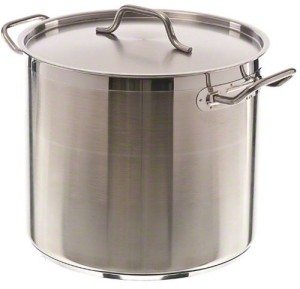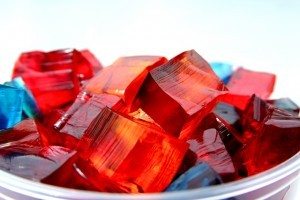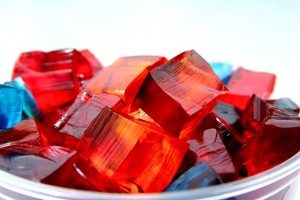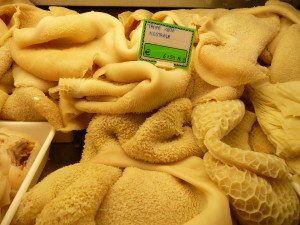
Collagen to the rescue!
Collagen is one of our oldest superfoods. In one form or another, collagen rich foods have been an integral part of traditional diets before we even understood how they supply the body with amino acids that are critical for regeneration of skin, cartilage and bone.
Goji berries and camu camu powder might be flying off the shelf, but collagen has stood the test of time and is recommended by grandmas and clinicians alike. I like to think of it as a superhero of tissue repair and growth. The most well-understood benefits of taking in foods that contain collagen are:
Wound healing:
Collagen supplies the body with the building blocks for fast tissue repair. Whether you are recovering from surgery, a skin cut or burn or trying to repair a leaky gut (your internal version of skin), your body will put the amino acids from collagen to good use.
All the way back in 1905, Erich Cohn of the Medical Polyclinic of the University of Bonn wrote about how gelatin (or cooked collagen) should be recommended to patients with intestinal inflammation (ie, IBS) because the amino acids prevented further injury. (1) This internal healing is the primary reason I got interested in collagen and I think it has played a big part in my recovery from leaky gut and numerous food sensitivities. It is true that your body can produce all these amino acids on its own, but is has been shown that dietary intake contributes to the availability and also that the natural supply may be taxed by higher demands during recovery (2,3).
Anti-aging:
You likely have caught on to the trend of collagen containing skin products claiming to boost your youthful appearance. While I am at a loss to explain how your body might utilize topical collagen, you can maintain supple skin and avoid early wrinkles by nourishing your skin with collagen from the inside out. It would be out of character to brag about my skin, but I have noticed that my nails and hair are growing fast and strong, so it stands to reason that my skin is getting the benefit as well. The body also utilizes collagen to repair connective tissue, keeping joints mobile and flexible. What good is radiant skin, after all, if we can’t go out and show it off?
Sports recovery:
Collagen supports muscle maintenance by contributing to the body’s production of creatine and helps your joints stay strong by providing building blocks for cartilage. Reports on this benefit, often quote the idiom “you are what you eat” (eating cartilage to build cartilage). The saying is even catchier in German “Man ist was man isst”.
In 1999, German researchers fed two groups of mice radioactive gelatin and one of the key amino acids associated with cartilage repair (proline). The experiment showed that the mice fed gelatin absorbed twice as much of the substance directly into their cartilage (4), mirroring earlier clinical observations that feeding patients gelatinous broth and stews was more effective than supplementing with amino acids.
Now what? Collagen for breakfast, lunch and dinner?
 Just like you wouldn’t stop eating a well-rounded diet in favor of subsisting on blackberries, collagen (or cooked collagen, known as gelatin) is not a replacement for food but rather a supplement.
Just like you wouldn’t stop eating a well-rounded diet in favor of subsisting on blackberries, collagen (or cooked collagen, known as gelatin) is not a replacement for food but rather a supplement.
We have become conditioned to look for probiotic rich foods; similarly we should look for collagen rich foods such as homemade stocks and broths, “odd bits” such as tendons, tripe and chicken feet, or add small amounts of gelatin or collagen hydrolysate to our healthy meals on a regular basis.
Again, similarly to probiotic rich fermented foods, constancy is king over quantity.

Sub-par gelatin with a healthy dose of food dye, BHA, and strange sounding acids.
Also, not all gelatin is created equal. Research into gelatin was all the rage in the early 20th century. I imagine it’s early status as a “super food” lead to the infusion of jello salads and brightly colored Jello jigglers into American culture. Sort of like how we started with dehydrated fruit leather and ended up with cavity inviting fruit-roll ups! Unfortunately, in the case of packaged gelatin, we lost out on the real benefit of consuming collagen rich, gelatinous stews, soups and gravies when we turned to an “easy substitute.”
Traditional sources of collagen typically included bones, cartilage and skins, whereas most commercial gelatin today is made exclusively from the animal’s skin, missing out on the balance of potent chemicals in a broth. Even worse, many gelatins and broth substitutes (bullion) contain the neurotoxin MSG, so that once nourishing pot of homemade soup may not be as beneficial as you think.
Recommended reading:
- Gotthoffer, NR, Gelatin in Nutrition and Medicine (Graylake IL, Grayslake Gelatin Company, 1945)
- Kaayla T. Daniel, PhD, CCN, Why Broth is Beautiful http://www.westonaprice.org/health-topics/why-broth-is-beautiful-essential-roles-for-proline-glycine-and-gelatin/
- Catherine Crow http://www.thehealthyhomeeconomist.com/gelatin-and-collagen-hydrolysate-whats-the-difference/
Referenced sources:
- Gotthoffer, NR, Gelatin in Nutrition and Medicine (Graylake IL, Grayslake Gelatin Company, 1945), p62
- Jaksic, et al. Plasma proline kinetics and concentrations in young men in response to dietary proline deprivation,American Journal of Clinical Nutrition, 1990, 52, 307-312.
- Yu,YM et al. Quantitative asepcts of glycine and alanine nitrogen metabolism in postabsorptive young men: effects of level of nitrogen and dispensable amino acid intake. Journal of Nutrition, 1985, 115, 399-410.
- Oesser, S, et al. Oral administration of (14) C labeled gelatin hydrolysate leads to an accumulation of radioactivity in cartilage of mice (C57/BL), Journal of Nutrition, 1999, 10, 1891-1895.






A really interesting 360 degree collagen journey as a lot of you talked about are things I didn’t know at all!
Collagen is definitely the unsung hero of wellness. It’s so helpful to keep your joints and connective tissues healthy.
Collagen is generally considered to be a safe and nontoxic daily supplement for healthy individuals, and most people won’t experience adverse side effects.
I take collagen protein every day, and I feel so much better from it. All the pain in my joints and tendons has disappeared, and even my hair and nails are healthier.
Interesting read. I was looking up collagen for anti-aging purposes but never realised that it has so many other benefits. Time to look after myself better I think!
Wow!
I have heard a lot about collagen, and that it’s used in a lot of skin products, but I never knew that the substance was in so much food.
Wow, collagen is really amazing. I knew it was great but I didn’t know half of what you brought up. Good to know.
I always knew about collegen for the skin, but I never knew it helps with leaky gut. That’s pretty amazing, I know a few people who suffer from that and will have to pass this article on to them. I love all the resources by the way!
The Anti-aging aging part seems really interesting. Thanks for adding references!
This was so informative! Not gonna lie, I feel helpless when it comes to food sometimes. What can I trust!